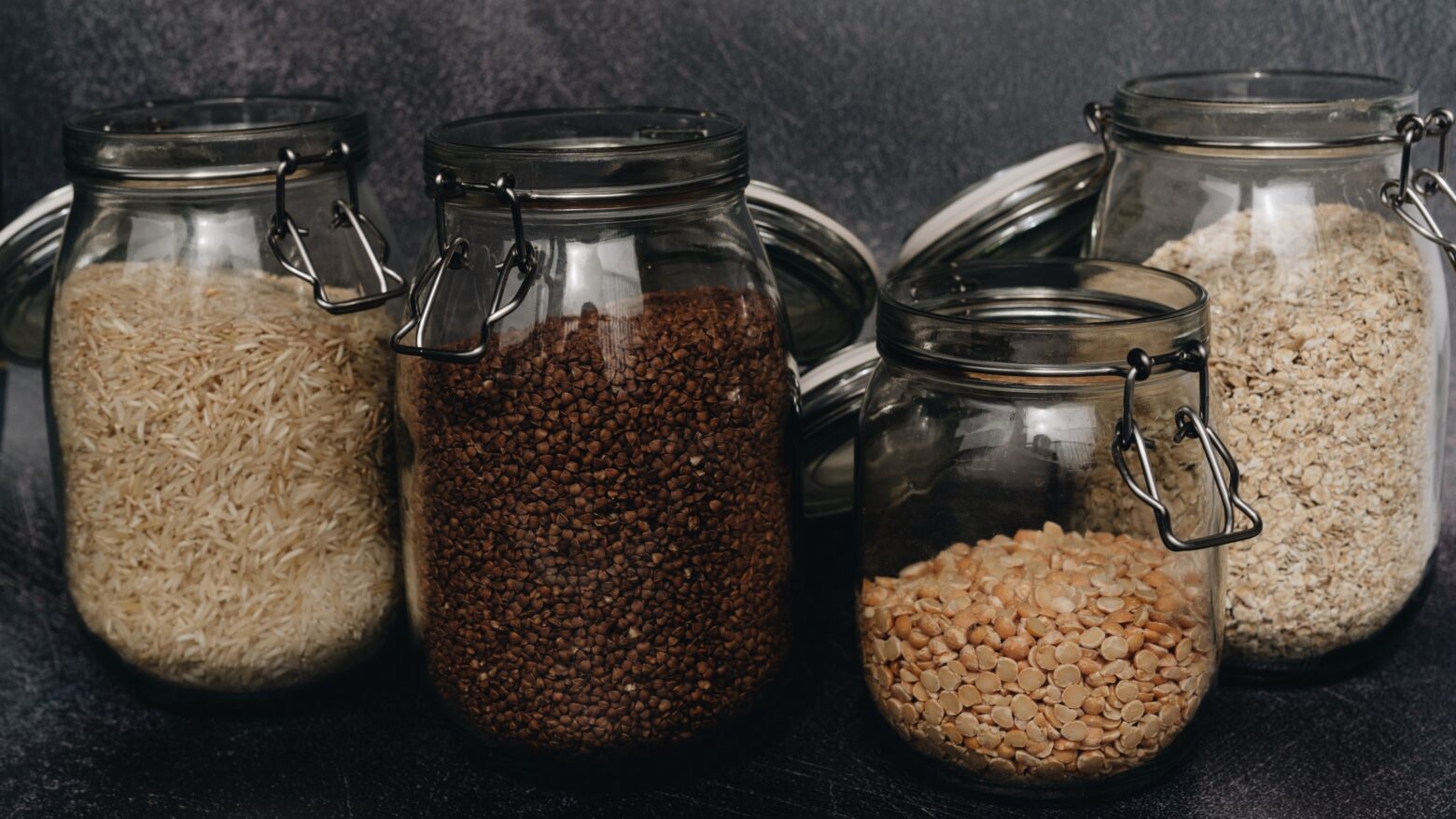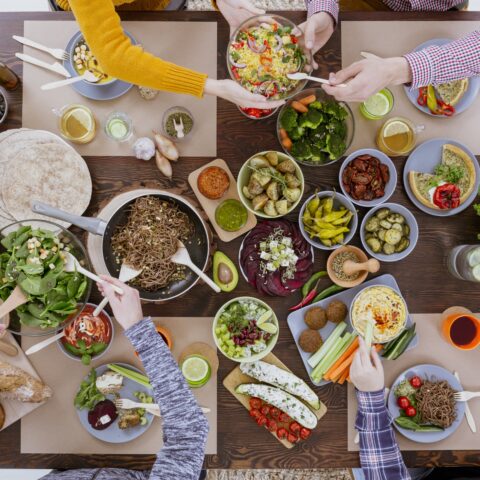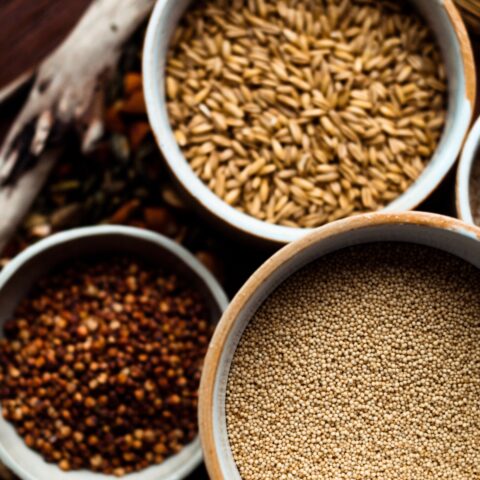Are Whole Grains Healthy?

For decades, food labels and ads have promoted whole grains as a healthy part of your diet. In fact, many of us grew up eating a bowl of cereal and milk for breakfast because the ads on TV said it was good for us. [1]
Even the term whole grains implies their wholesomeness.
However, there’s a lot more to the story. Here’s what we know about whole grains, and why we don’t include them in The Paleo Diet®.
What Are Whole Grains?
To qualify as a whole grain, the grain must contain the entire grain seed in its original proportions. This means that 100 percent of the original kernel—all of the bran (the fibrous outer layer), endosperm (the starchy, middle layer), and germ (the fat-packed core)—must be present. Examples of whole grains include buckwheat or brown rice.
Many of the grains you find in the supermarket are refined; this includes white flour and white rice. Refined grains are processed by stripping the bran from the germ, leaving just the middle endosperm. [2] This process also eliminates many of the nutrients and fiber.
Whole grains are supposedly “healthier” because they include the bran and germ, with the nutrients and fiber intact. Why, then, are whole grains still not Paleo?
Whole grains aren’t Paleo. Many grains contain anti-nutrients, and even those that are gluten-free are high in inflammation-raising omega-6 fatty acids.
The Dangers of Gluten
Unfortunately, humans are simply not suited to eat grains, regardless of whether they’re processed or not.
There are a few reasons for this. First, many grains contain glutens, an insidious group of protein compounds that can cause negative health consequences.
Gluten is a lectin, which is an anti-nutrient. Consuming anti-nutrients has the potential to cause everything from low level inflammation to full blown auto-immune issues. In some cases, a weakened intestinal barrier or “leaky gut” can cause an immune response when gluten crosses into the bloodstream. [3,4]
Grains that contain gluten include oats, corn, barley, modern wheat, ancient grains, rye, farro, and couscous. [5,6] If you have a gluten sensitivity, these foods will likely cause a reaction.
Some grains are naturally gluten-free, like rice, amaranth, quinoa, buckwheat, millet, and teff. However, even gluten-free grains aren’t that much healthier for you as they still contain problematic anti-nutrients, like other lectins and phytate. They are also high in omega-6 fatty acids, which is pro-inflammatory when out of proportion with omega-3 fatty acids and can cause digestive problems and other health issues. [7, 8, 9, 10]
Fiber Myths
Many people incorrectly assume that whole grains are healthy because of their fiber content. While most whole grains contain significant levels of soluble and insoluble fiber, there are better sources, including fruits and vegetables.
Loading up on copious amounts of fruits and veggies every day is your best way to consume fiber, while also helping you stay hydrated.
A leading reason for this myth is how fiber content is expressed. Food ingredients are typically calculated in grams per serving size by weight (e.g., per 100 grams) versus grams per serving size by energy (e.g., per 100 calories). The tables below show the fiber content of grains, and, vegetables and fruits using those two different calculations.
Fiber Content of Grains
| Food item, raw | Fiber (g/100 g) | Fiber (g/100 cal) |
| Wheat | 13.1 | 4.0 |
| Oats | 10.1 | 2.7 |
| Corn | 7.3 | 2.0 |
| Barley | 10.1 | 2.9 |
| Rice (brown) | 4.6 | 1.3 |
| Rice (white) | 0.5 | 0.7 |
| Amaranth | 6.7 | 1.8 |
| Chia | 27.3 | 5.1 |
| Quinoa | 7.0 | 1.9 |
| Buckwheat | 10.0 | 2.9 |
| Sorghum | 6.7 | 2.0 |
Fiber Content of Vegetables and Fruits
| Food item, raw | Fiber (g/100 g) | Fiber (g/100 cal) |
| Broccoli | 2.6 | 7.7 |
| Carrot | 2.8 | 6.8 |
| Spinach | 2.2 | 9.6 |
| Tomato | 1.2 | 6.7 |
| Apple | 2.1 | 4.2 |
| Navel orange | 2.0 | 5.2 |
At first glance, it appears that grains have a much higher level of fiber than fruits and vegetables (see the first column). However, there’s a crucial factor to consider: The fruits and vegetables listed above are at least 84 percent water, and the grains are only about 10 percent.
So, when the fiber content is calculated as grams per 100 calories, it creates a more accurate picture (see the second column). For example, wheat provides only 4 grams of fiber per 100 calories, whereas broccoli provides nearly twice as much at 7.7 grams. [9]
In other words, grains cannot compete with fruits and vegetables as to their fiber supply. Loading up on copious amounts of fruits and veggies every day is your best way to consume fiber, while also helping you stay hydrated.
Are Whole Grain Cookies Better Than Refined?
Now that we know that whole grains aren’t good for you, you may be wondering whether whole grain cookies or bread are healthier than their refined counterparts.
This will depend upon the individual. Whole grains will tend to have a higher anti-nutrient content than refined grains because more of the kernel remains. If inflammation and immune issues are of concern, a refined grain cookie may be the better choice.
However, refined grains tend to have a higher glycemic response. If you are struggling with high blood sugar levels, the whole grain cookie is probably the way to go.
If you have both issues, skip the treat altogether until you get your health issues under control—which may be accomplished quicker than you might expect on The Paleo Diet. Either way, make sure you limit cookies and breads to 15 percent of your diet.
The Bottom Line
Whole grains aren’t Paleo. Many grains contain anti-nutrients, and even those that are gluten-free are high in inflammation-raising omega-6 fatty acids.
If you’re concerned about getting enough fiber, remember that fruits, vegetables, and tree nuts are a better source—and healthier, generally!
If you really want to eat whole grains and you tolerate them well, limit your indulgence of them to 15 percent of your diet to adhere to the 85/15 rule.
References
[1] Whole Grains Council. 2006. The whole grain stamp. Getting whole grains to 3. https://wholegrainscouncil.org…; TheWholeGrainStamp.pdf
[2] Anonymous. Undated. The nutrition source – whole grains. Harvard School of Public Health. https://www.hsph.harvard.edu/n…;
[3] Whiteman, H. 2016. Gluten sensitivity: biological mechanism uncovered. Medical News Today. https://www.medicalnewstoday.c…;
[4] McMillen, M. Undated. Leaky gut syndrome: what is it? https://www.webmd.com/digestiv…;
[5] Anonymous. 2020. Ancient grains. Wikipedia. https://en.wikipedia.org/wiki/…,amaranth%2C%20buckwheat%2C%20and%20chia
[6] Kubala, J. 2020. 8 foods to avoid with a gluten intolerance (and 7 to eat). https://www.healthline.com/nut…;
[7] Cordain L. et al. 2005. Origin and evolution of Western diet: health implications for the 21st century. American Journal of Clinical Nutrition 81:341–54. https://academic.oup.com/ajcn/…;
[8] Cordain, L. 2011. The paleo diet: lose weight and get healthy by eating the foods you were designed to eat. John Wiley and Sons, New York. 266pp.
[9] USDA. 2020. Nutrient database: FoodData Central. https://fdc.nal.usda.gov//&nbs…;
[10] Patterson, E. 2012. Health implications of high dietary omega-6 polyunsaturated fatty acids. Journal of Nutrition and Metabolism 539426. https://www.ncbi.nlm.nih.gov/p…;
Bill Manci
Bill Manci is the president of a fisheries and aquaculture consulting company and he has worked with The Paleo Diet since 2002.
More About The Author




